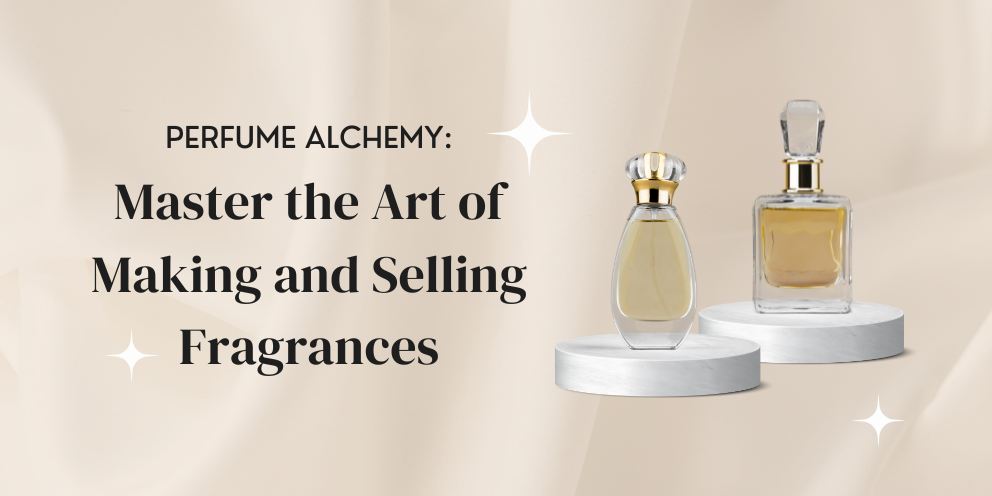Perfume Alchemy: Master the Art of Making and Selling Fragrances

Do you know that a perfume scent can make you memorable lifetime. 83% of people stated that scents act as triggers for remembering precise memories after a prolonged period. Have dreams of selling perfume that you create yourself ever crossed your mind? It could be an excellent business idea.
Creating a perfume from your recipes for personal use or business operations is a creative and rewarding activity. This guide offers all the essential information you need on how to make perfume and start a business that sells your scents. You should choose customized packaging for a better impression on your audience. Custom perfume boxes wholesale provide protection, enhance branding, and are budget-friendly.
Science Behind Perfume
Perfume originated from the word perfumus. Per means thorough, and fumus means smoke. Our nose connects specifically to the limbic system inside our brain, where emotions and memories remain. Scents stimulate neural signals that proceed from the olfactory bulb to connect with memory-related regions of the hippocampus alongside emotional areas like the amygdala in the brain.
Our brain connects these scents to strong emotions because of its close relationship with the olfactory system. Research indicates human beings maintain memory recollection of particular smells through years and occasionally extend past decades. The brain retrieves forgotten memories immediately after someone experiences a scent that was absent for an extended period.
How to Make Perfume at Home
The right knowledge and proper materials enable everyone to practice perfume-making as an accessible process at home. You should start your home perfume creation by collecting the necessary materials as your first step. Making perfume at home requires some essential items and several basic elements.
Essential Oils
While making your perfume, you have to use essential oils or fragrance oils as fundamental ingredients. Lavender together with jasmine, rose, sandalwood, vanilla, and several additional oils can be found among many different perfumery oils.
Carrier Oils
The combination of carrier oils provides a beneficial solution to dilute essential oils while delivering better application. Three commonly used carrier oils available for perfume include jojoba oil, fractionated coconut oil, and almond oil.
Alcohol
The perfume needs alcohol as its solvent because it enables essential oils to dissolve properly and combine.
A Perfect Bottle
After preparing your perfume, you have to get a glass bottle for proper storage. Small dark glass bottles serve as excellent containers for home-made perfumes as they shield the liquid from exposure to UV rays.
The next step after collecting this essential oil is combining various scents that lead to balanced fragrances. Create various note combinations to develop a fragrance mix that matches your taste preferences. To learn effectively, you should create small test samples, which will help you track the fragrance development as time passes.
Top Notes: This is the initial smell you notice while applying it. Lemon and orange together with bergamot, join mint, and lavender herbs, are frequently chosen.
Middle Notes: These are also known as heart notes. It takes over right after the disappearance of the top notes to form the central fragrance element of your perfume. Rose together with jasmine, and geranium make common choices as middle notes for perfumes.
Base Notes: Base notes function as the fragrance’s fundamental elements, which create depth in the perfume. Your skin displays these notes for the longest period. Sandalwood stands alongside vanilla, and patchouli with musk are the most commonly used base notes.
How Do You Make Perfume with Flowers?
Floral perfumes are a favorite choice among many females. Throughout many centuries, flowers have remained a highlight for perfume production while their pleasing scents continue to be among the most chosen in modern fragrance markets. These scents give a soothing and fresh experience.
Floral perfume comes from your ability to mix different flower combinations during layering. Rose combined with lavender will generate a peaceful and sweet fragrance. To obtain essential oils from flowers, manufacturers use different extraction process during perfume production. Multiple steps exist for making floral-based perfume through extraction process.
Infusion Method
In this method, you shear flower petals in a container of oil like jojoba or sweet almond oil. The petals must infuse with oil for weeks before straining out the flowers to retain the flower fragrance in the carrier oil. The extracted oil can become ready for perfume creation by combining it with alcohol and additional oils.
Steam Distillation
Perfumers use the steam distillation method since it requires complex equipment to extract odors from floral products. Through steam distillation, makers use steam to draw essential oils from flowers before using them for perfume making.
Alcohol Extraction
You can obtain flower fragrance in alcohol solutions like vodka by placing petals in alcohol containers, which need several weeks of soaking. As time goes by the alcohol base will collect all the essential oils from flowers thus resulting in a perfume base.
How to Make Perfume Stay on All Day
After creating an innovative smell, the main challenge is how to make perfume stay on all day. Several methods exist to extend the duration of your perfume.
- Base notes that blend well together will maintain the strength of your perfume until the end of the day.
- Fixatives serve as valuable additives to perfume products because they function by reducing the speed at which essential oils evaporate.
- Don’t rub the sites you applied perfume on as it may disrupt the fragrance structure and make it evaporate fast.
- Analyze the proper concentration of ingredients during the mixing process.
- The perfume duration can be extended by applying it to pulsing areas such as your wrists, behind the ears, and the back of your neck.
- Using matching body lotions or oils together with perfume creates additional duration for the scent to last.
Market Your Perfume Brand
After getting insight on how to make your own perfume, start selling your perfume after the completion of your perfume-making journey. You have to market your perfume on social platforms with active marketing.
Start optimizing your websites with SEO or running ads. Your move to sell homemade perfume requires packaging as your next crucial step. Your product can gain both professionalism and attractiveness with personalized perfume boxes. Startups can try various packaging designs through custom boxes with no minimum purchase, which allows brands to get any number of boxes on order.
Conclusion
Making perfume at home for personal use, along with transforming it into a business, gives you unlimited chances to create what people love. Users who test different combinations of flowers and essential oils alongside unique fragrances can create their distinctive signature scent. Your perfume has the potential to grow into a major hit with proper equipment, together with suitable packaging.
Your question: how to make my own perfume and sell it, now have the answer. All the needed information puts you in a position to begin your fragrance journey. Who knows? Your perfume creation venture may start its path toward becoming a successful perfume venture in the industry.










